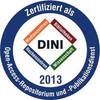In: Tapia, Andrea H. (Hrsg.): ISCRAM 2016 Conference proceedings : 13th International Conference on Information Systems for Crisis Response and Management. Rio de Janeiro, Brazil, ISCRAM 2016, 16 S. . ISBN 978-84-608-7984-8
Preview |
PDF, English
- main document
Download (728kB) | Terms of use |
Abstract
Urban flooding has been increasing in recent years and therefore new specified methods need to be developed and applied. The rise of Web 2.0 technologies and collaborative projects based on volunteered geographic information like OpenStreetMap (OSM) lead to new dimensions of participatory practices. Thus, citizens can provide local knowledge for natural hazard analysis in a convenient way. In the following, a case study of the Quilicura community in Santiago de Chile -regularly affected by urban floods- is presented. A combination of OSM Field Papers and the risk perception of local people is applied in the concept of risk awareness maps including a questionnaire for participants’ information. This explorative study is a promising approach for a complementing data source because insight into local knowledge is acquired in a fast way. Results reveal two main streets, which are identified by the participants as prone to urban floods.
| Document type: | Book Section |
|---|---|
| Editor: | Tapia, Andrea H. |
| Title of Book: | ISCRAM 2016 Conference proceedings : 13th International Conference on Information Systems for Crisis Response and Management |
| Publisher: | ISCRAM |
| Place of Publication: | Rio de Janeiro, Brazil |
| Date Deposited: | 15 Aug 2025 13:53 |
| Date: | 2016 |
| ISBN: | 978-84-608-7984-8 |
| Page Range: | 16 S. |
| Event Dates: | May 22-25, 2016 |
| Event Location: | Rio de Janeiro, Brasil |
| Event Title: | 13th Proceedings of the International Conference on Information Systems for Crisis Response and Management, Rio de Janeiro, Brasil, May 22-25, 2016 |
| Faculties / Institutes: | Fakultät für Chemie und Geowissenschaften > Institute of Geography |
| DDC-classification: | 550 Earth sciences |
| Uncontrolled Keywords: | Natural hazard analysis, Web 2.0, participatory sensing, OpenStreetMap, risk awareness |
| Further URL: |









